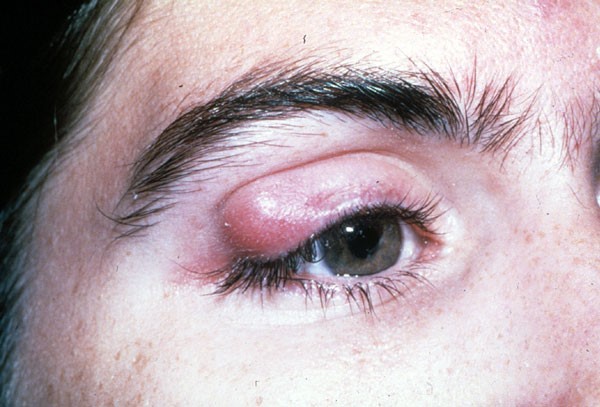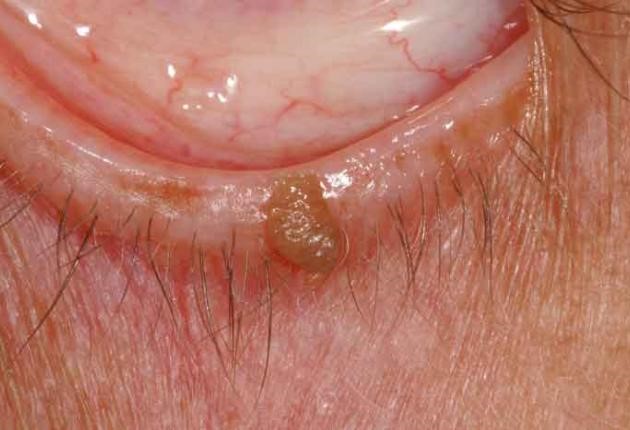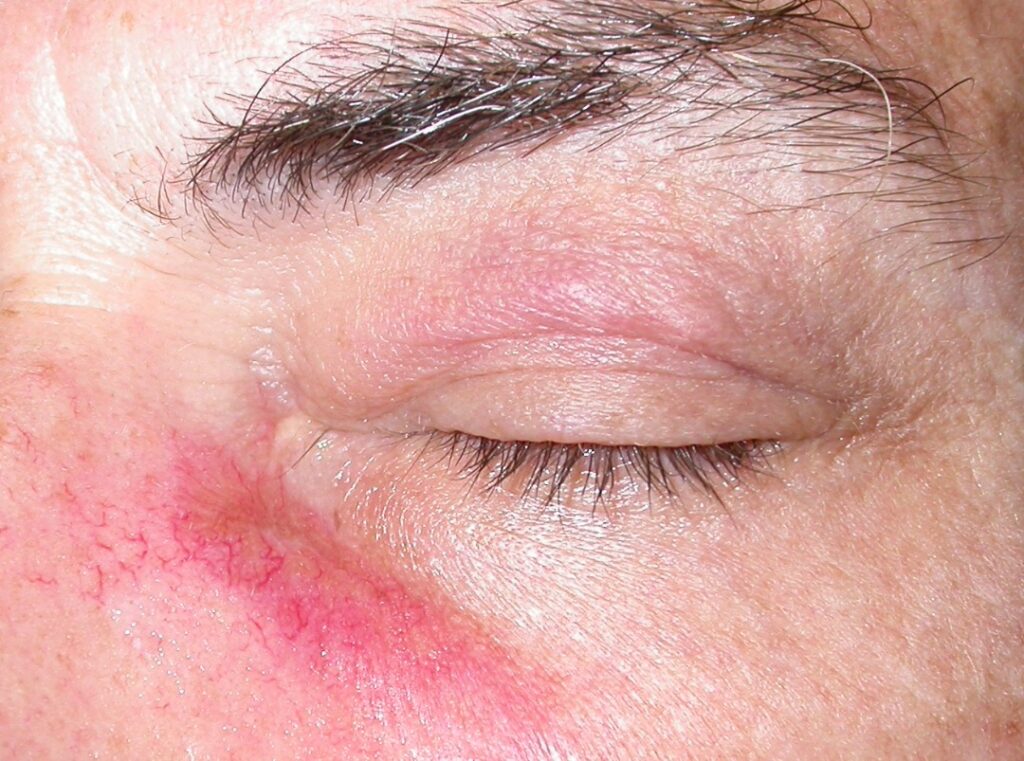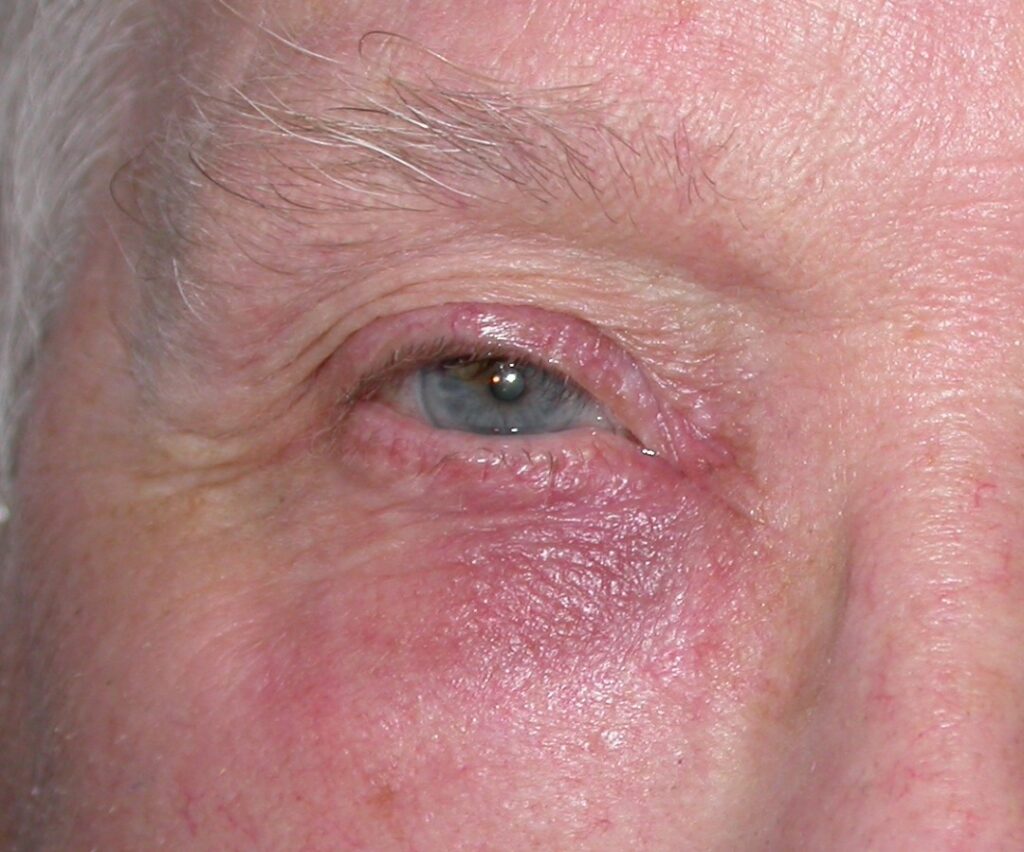Chalazion
There are many types of lid lumps and bumps. A common lid lump is a chalazion or Stye. This is caused by a blocked meibomian gland in either the upper or lower eyelid. Any cause of inflammation can block the meibomian orifice such as injury, hayfever, allergic eye disease, blepharitis, etc.
If the gland becomes blocked an infection can set in. An infected meibomian gland is a red and painful lid lump known as an internal hordeolum. The key to successful treatment is hot compresses. Rubbing with a hot moist flannel softens the secretions blocking the meibomian gland orifice and massage encourages the cyst to reopen or burst. If the hordeolum unblocks or bursts then it will not require further treatment. If it remains blocked then the infection eventually settles, and the painful red hordeolum turns into a painless skin coloured lid lump known as a stye or chalazion. A stye may take over 1 year to slowly shrink and disappear.
If the chalazion/stye is not bothering you cosmetically, visually, and not causing ongoing discomfort then it can be safely left. If the lump is annoying you then it can be incised and drained. Drainage occurs from the inside of the eyelid and so that there is no visible scar from this minor procedure. This procedure is known as ‘incision and curettage’.
Papilloma


This a small painless lump anywhere on the skin around the eye, lid margin or lashes. It is typically caused by a virus infection. It may slowly enlarge over the years, looks warty, and may safely left. If it causes irritation or cosmetic issues then it can be excised.
Carcinoma
Skin cancers are particularly common around the eye, in caucasian individuals with sun damaged skin. Ninety percent of cancers around the eye are basal cell carcinomas (BCCs). These are slow growing painless nodules which develop a raised edge with fine blood vessels on the surface. They often develop an ulcerated centre over a period of years. Another type, which is clinically similar in appearance, is a squamous cell carcinoma (SCC). These are faster growing and more aggressive carcinomas. If you are unsure about the diagnosis of your lid lump seek specialist advice urgently.

Blocked Tear Duct
Tears are made by the lacrimal glands on the upper outside edge of the eye. They typically evaporate from the surface of the eye during the day. If there is excessive tearing then the excess tears are drained away via 2 tear ducts. One in each upper lid and one in each lower lid. These tear ducts drain to the back of the nose. For this reason when your eyes water your nose often runs.
If your tear ducts are narrowed or blocked you will have watery eyes. This can make the skin around your eyelids red and sore.

If you suffer from watery eyes, during your consultation your doctor can syringe your tear ducts. It they are not blocked then this suggests the problem is more to do with excessive production of tears.
If your tear ducts are blocked then the ducts can be either dilated or surgically opened up again with a dacryocystorhinostomy (DCR) operation.
